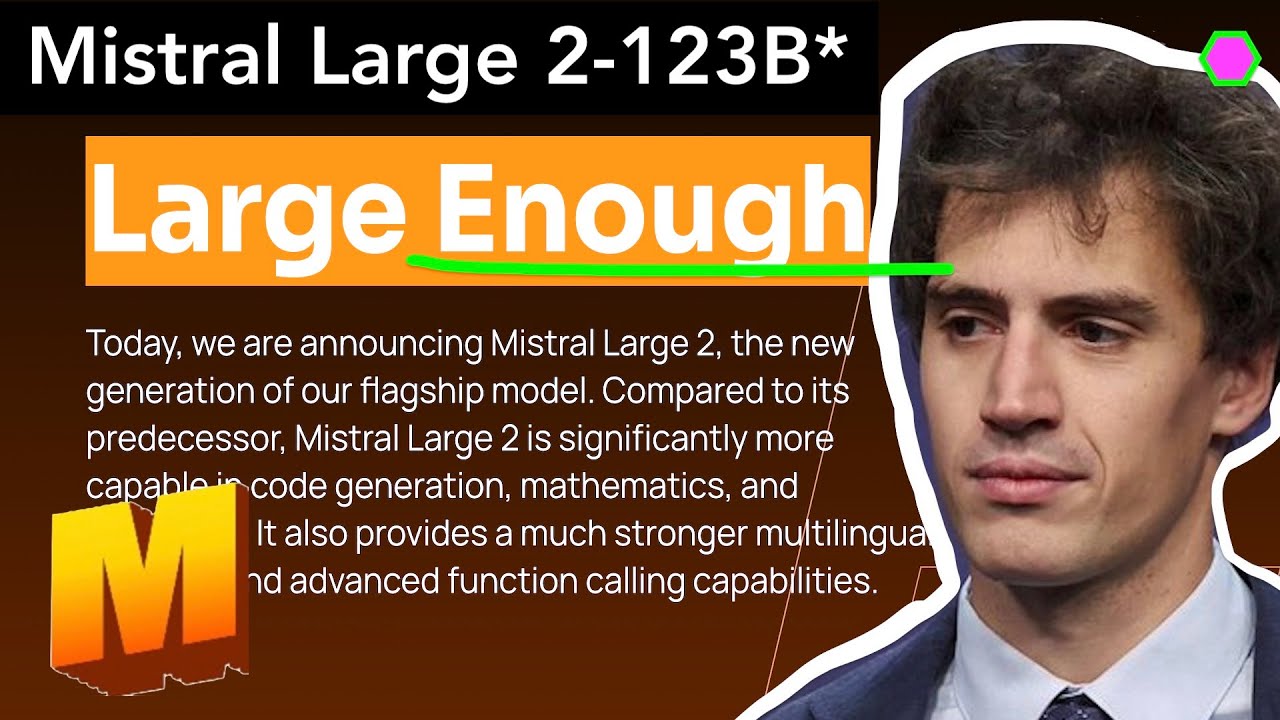The video discusses the Mistral Large 2-123B model, which, despite having only 123 billion parameters, competes effectively with Meta’s Llama 3.1 405B in coding and agentic capabilities, showcasing strong performance in various programming languages and complex reasoning tasks. It highlights Mistral’s accessibility, efficiency in single-node inference, and commitment to accuracy, positioning it as a significant advancement in the open-source AI landscape.
The video discusses the recent release of the Mistral Large 2-123B model, which aims to compete with Meta’s Llama 3.1 405B model. Despite being significantly smaller at 123 billion parameters, Mistral Large 2 is noted for its performance, particularly in coding and agentic applications. The host emphasizes that this model can be run in full precision on a single H100 GPU, making it accessible for users without the need for extensive hardware setups. The model supports multiple languages and coding formats out of the box, incorporating recent improvements from other models in the field.
The host highlights that Mistral Large 2 is designed specifically for single-node inference, allowing for efficient processing and cost-effective fine-tuning. It features a 128,000-token context window and is focused on enhancing performance metrics, particularly in code generation and reasoning capabilities. Mistral’s commitment to accuracy is also emphasized, as the model is fine-tuned to acknowledge its limitations and avoid generating misleading information. This approach aims to improve the reliability of outputs, especially in agentic workflows where accuracy is crucial.
The video compares the coding performance of Mistral Large 2 with other models, noting that it outperforms the previous Mistral model and is competitive with Llama 3.1 405B and OpenAI’s GP4 Omni in coding tasks. The host discusses how different models excel in various programming languages, with Mistral Large 2 showing strong performance in Java, while Llama 3.1 405B performs better in languages like Bash and C. The discussion on coding capabilities provides insight into the strengths and weaknesses of each model, suggesting that Mistral has carved out a niche in code generation.
In addition to coding performance, the video covers the model’s ability to handle complex reasoning tasks and its responsiveness in generating outputs. The host conducts practical tests, demonstrating how Mistral Large 2 performs in generating code and responding to hypothetical scenarios. The model’s ability to switch roles between code writer and code checker is highlighted, showcasing its flexibility in handling agentic tasks. This responsiveness and efficiency are contrasted with the performance of Llama 3.1 405B, which, while strong, does not show as marked an improvement over its predecessor.
Overall, the video presents Mistral Large 2 as a significant advancement in the open-source large language model landscape, positioning it as a strong competitor to Meta’s Llama 3.1 405B. The host emphasizes the importance of open-source AI development, suggesting that innovations in this space can lead to better models and broader access for users. The video concludes by encouraging viewer engagement and expressing excitement about the ongoing competition between these two major players in the AI field.
